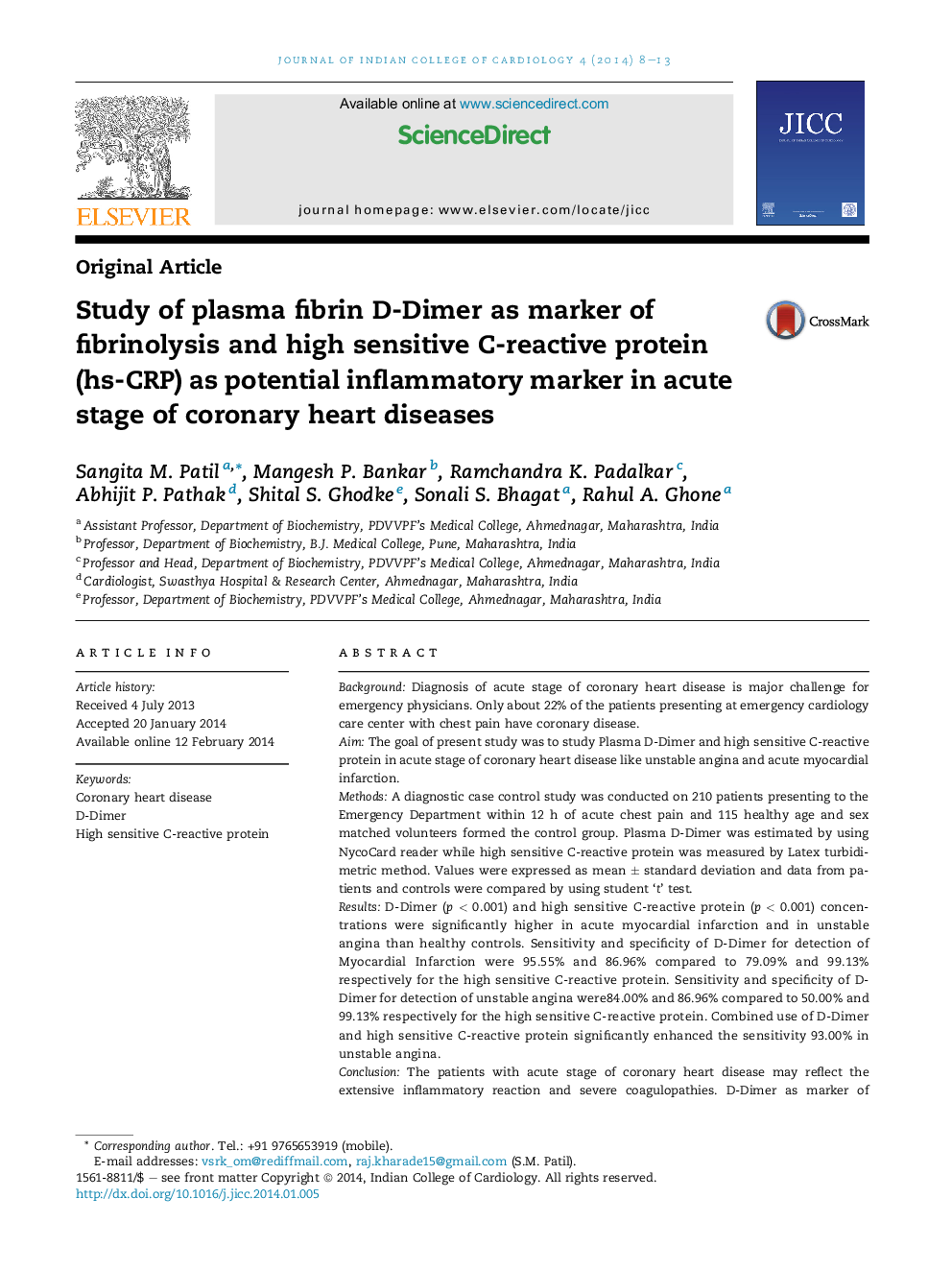| Article ID | Journal | Published Year | Pages | File Type |
|---|---|---|---|---|
| 2973941 | Journal of Indian College of Cardiology | 2014 | 6 Pages |
BackgroundDiagnosis of acute stage of coronary heart disease is major challenge for emergency physicians. Only about 22% of the patients presenting at emergency cardiology care center with chest pain have coronary disease.AimThe goal of present study was to study Plasma D-Dimer and high sensitive C-reactive protein in acute stage of coronary heart disease like unstable angina and acute myocardial infarction.MethodsA diagnostic case control study was conducted on 210 patients presenting to the Emergency Department within 12 h of acute chest pain and 115 healthy age and sex matched volunteers formed the control group. Plasma D-Dimer was estimated by using NycoCard reader while high sensitive C-reactive protein was measured by Latex turbidimetric method. Values were expressed as mean ± standard deviation and data from patients and controls were compared by using student ‘t’ test.ResultsD-Dimer (p < 0.001) and high sensitive C-reactive protein (p < 0.001) concentrations were significantly higher in acute myocardial infarction and in unstable angina than healthy controls. Sensitivity and specificity of D-Dimer for detection of Myocardial Infarction were 95.55% and 86.96% compared to 79.09% and 99.13% respectively for the high sensitive C-reactive protein. Sensitivity and specificity of D-Dimer for detection of unstable angina were84.00% and 86.96% compared to 50.00% and 99.13% respectively for the high sensitive C-reactive protein. Combined use of D-Dimer and high sensitive C-reactive protein significantly enhanced the sensitivity 93.00% in unstable angina.ConclusionThe patients with acute stage of coronary heart disease may reflect the extensive inflammatory reaction and severe coagulopathies. D-Dimer as marker of fibrinolysis and hs-CRP a sensitive marker of inflammation may constitute a good screening test to add a current emergency protocol in the management of chest pain of possible coronary origin.
